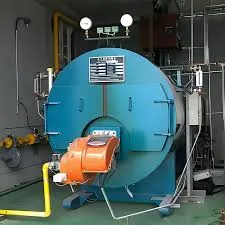
Nov . 27, 2024 04:43 Back to list
Development of a Coal-Fired Steam Boiler for Enhanced Energy Efficiency and Emission Reduction
The Role of Coal-Fired Model Steam Boilers in Modern Energy Production
In the landscape of energy production, coal has long been a dominant source for generating steam and electricity. Coal-fired model steam boilers stand as a testament to the efficiency and reliability of this traditional energy source, albeit within a framework that faces scrutiny due to environmental concerns. Understanding the mechanics and the implications of these boilers is essential for evaluating their role in contemporary society.
The Role of Coal-Fired Model Steam Boilers in Modern Energy Production
Despite their reliability and established technology, coal-fired boilers are often criticized for their environmental impact. The burning of coal releases significant amounts of carbon dioxide (CO2), a greenhouse gas that contributes to climate change. Additionally, coal combustion can emit sulfur dioxide (SO2), nitrogen oxides (NOx), and particulate matter, which can lead to air quality issues and health problems. In response to these concerns, the industry has made strides in improving boiler technologies. Modern coal-fired boilers incorporate advanced emission control systems, such as flue gas desulfurization, selective catalytic reduction, and electrostatic precipitators, to reduce harmful emissions and enhance overall efficiency.
coal fired model steam boiler

The advent of cleaner energy technologies has prompted a reevaluation of the future of coal-fired steam boilers. Renewable energy sources like wind, solar, and hydropower are gaining traction, often viewed as greener alternatives. However, the transition isn’t instantaneous, and coal-fired boilers continue to play a significant role, especially in regions reliant on stable, base-load power. For many countries, coal remains a vital part of the energy mix due to its abundance and cost-effectiveness. For instance, nations with rich coal deposits can leverage this resource to ensure energy security and economic stability, particularly during periods of peak demand.
Innovations in carbon capture and storage (CCS) are also noteworthy. CCS technologies have the potential to capture up to 90% of CO2 emissions produced from the use of fossil fuels in electricity generation, including coal-fired boilers. By storing CO2 underground or utilizing it in industrial processes, these technologies may enable a cleaner operation of existing coal infrastructure.
Looking ahead, the role of coal-fired model steam boilers is in a state of flux, balancing between traditional energy production methods and the pressing need for environmental responsibility. As environmental regulations become more stringent, and the push for low-carbon technologies intensifies, coal-fired boilers might face increased operational costs and regulatory pressures. Nevertheless, with ongoing research and development, there is potential for greater efficiency and lower emissions in existing plants, which could prolong the life of coal in the energy sector.
In conclusion, coal-fired model steam boilers are a critical component of global energy production, offering both challenges and opportunities. While they provide reliable power generation, the associated environmental impact necessitates innovation and adaptation. The future may hinge on developing cleaner technologies that allow us to harness the benefits of coal while mitigating its disadvantages, illustrating the complex interplay between energy needs and environmental stewardship. As we move forward, a balanced approach will be essential in ensuring a sustainable energy future.
-
High-Efficiency Commercial Oil Fired Steam Boiler for Industry
NewsJul.30,2025
-
High-Efficiency Biomass Fired Thermal Oil Boiler Solutions
NewsJul.30,2025
-
High Efficiency Gas Fired Thermal Oil Boiler for Industrial Heating
NewsJul.29,2025
-
High-Efficiency Gas Fired Hot Water Boiler for Sale – Reliable & Affordable
NewsJul.29,2025
-
High Efficiency Biomass Fired Hot Water Boiler for Industrial and Commercial Use
NewsJul.29,2025
-
High-Efficiency Biomass Fired Hot Water Boiler for Industrial Use
NewsJul.28,2025
Related PRODUCTS






















